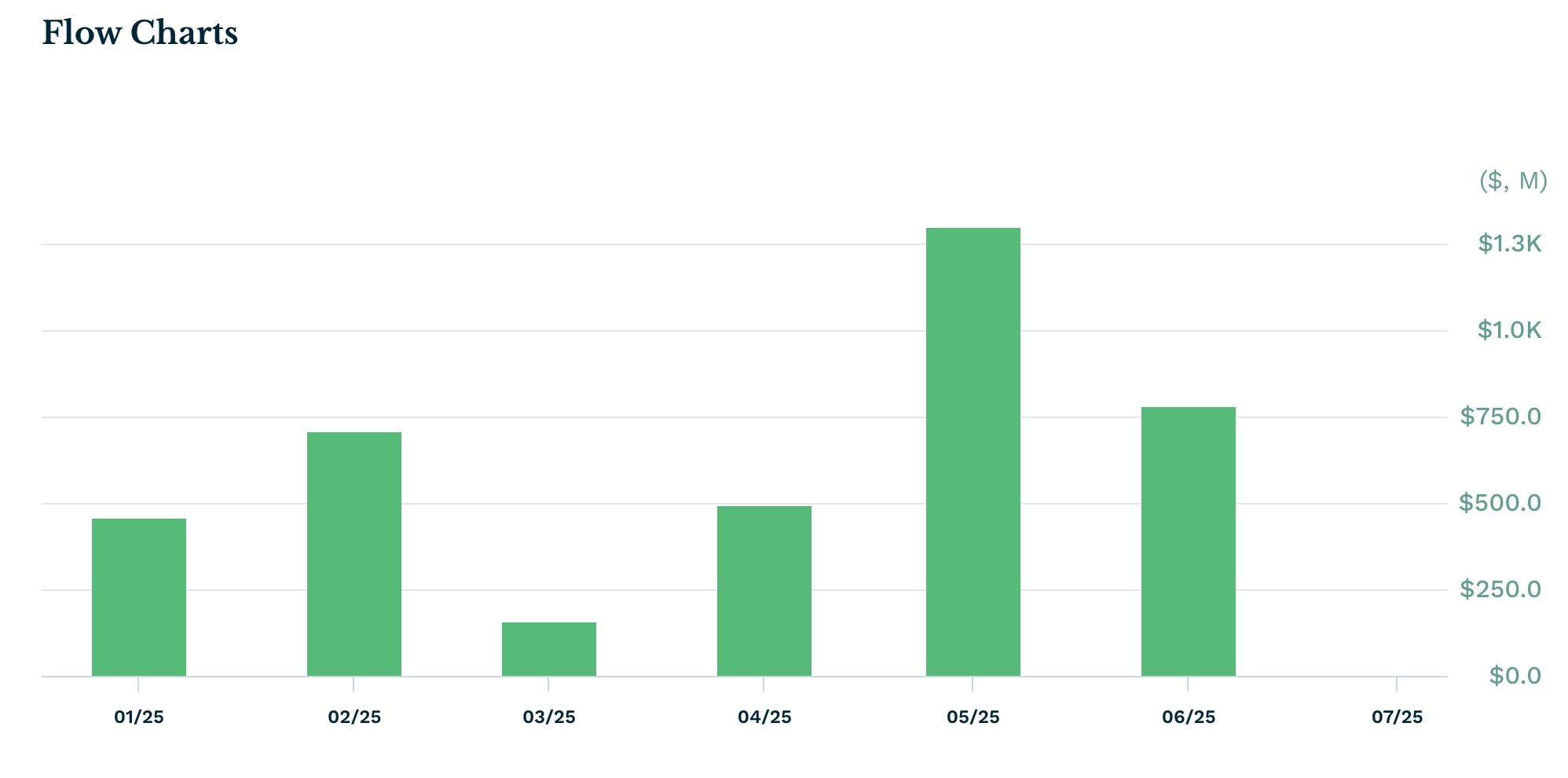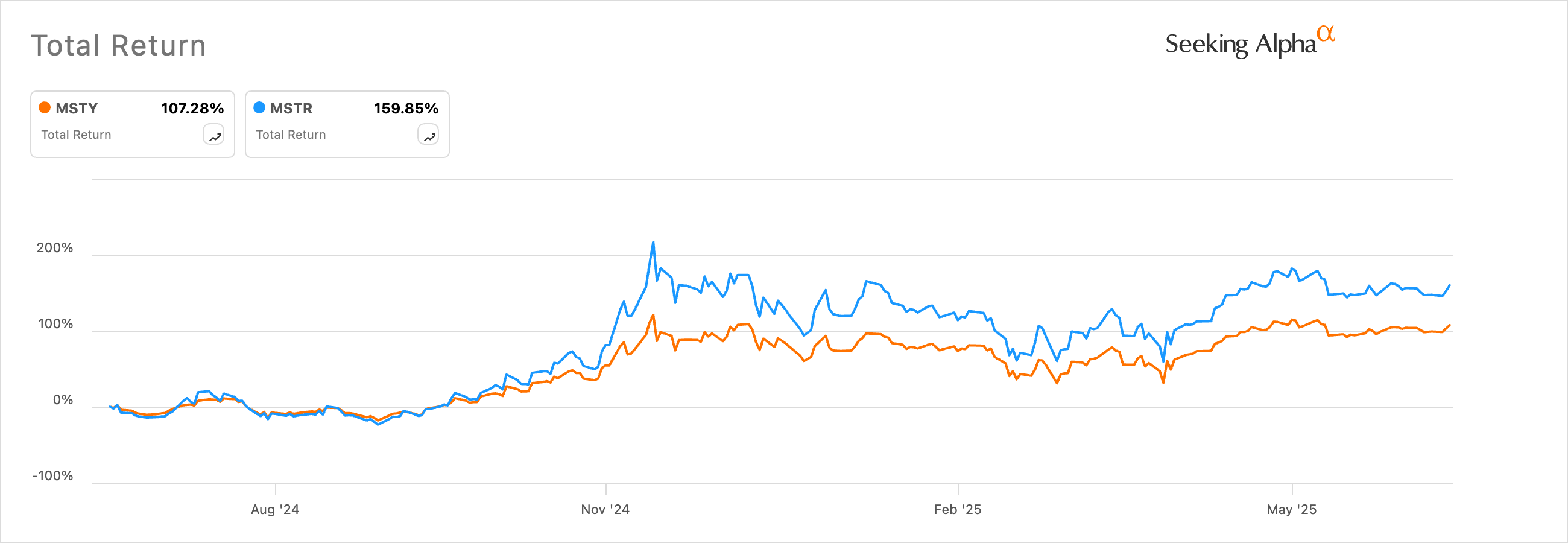MSTR vs. MSTY: Which Stock Crushes It Harder When Bitcoin Goes Ballistic?
Bitcoin's bull run is back—and so is the age-old debate: MicroStrategy or Mystery Stock Y? Here's the brutal breakdown.
The Bitcoin Leverage Play
MSTR remains the OG corporate BTC whale, doubling down on its crypto bet like a Wall Street degen. Meanwhile, MSTY's strategy is about as clear as a Satoshi whitepaper—are they hodling or just pretending?
Liquidity vs. Volatility
MSTR trades like a blue-chip proxy for BTC, while MSTY swings harder than a crypto Twitter thread. Choose your poison: stable gains or adrenaline-fueled chaos.
The Bottom Line
When BTC pumps, both stocks ride the wave—but only one has the balance sheet to survive the inevitable crash. (Spoiler: It's not the one with 'mystery' in its name.)
Pro tip: If you're buying either stock for 'exposure to blockchain innovation,' maybe just buy Bitcoin—and save yourself the middleman fees.
 MSTY ETF inflows | Source: ETF
MSTY ETF inflows | Source: ETF
In a covered call approach, the fund invests a portion of its capital in Strategy stock and benefits as the stock rises. It then sells call options on the stock, generating premium income, which it distributes to investors.
A call option is a contract that gives the investor the right, but not the obligation, to buy an asset at a specific price within a certain time period.
If MSTR stock drops below the strike price, the option becomes worthless since the stock can be bought directly on the market. If the stock rises above the strike price, the call option is exercised. In this case, the fund retains the premium but sacrifices additional upside if the rally continues.
If the stock remains flat, the ETF still generates a return through the monthly premium. These scenarios explain why MSTY and other covered call ETFs offer high dividend yields.
MSTY has a lower total return than MSTR
The 136% dividend yield is highly enticing to many income investors. For instance, a $10,000 investment WOULD yield a gross annual dividend payment of $13,600 if the yield remains constant.
However, a closer look reveals that MSTY’s total return has lagged behind MSTR’s. Data shows that MSTY has declined by 18% year to date, while MSTR stock is up 34%.
The best measure of an ETF’s performance is the total return, which includes dividends. In this case, MSTR stock has risen 34.20% this year, while MSTY has gained 29%. As shown below, MSTY’s total return over the past 12 months was 107%, compared to MSTR’s 160%.

A similar trend appears across most covered call ETFs. For example, Coinbase stock has advanced 60% in the past 12 months, while the YieldMax COIN Option Income Strategy ETF (CONY) has risen 24%. Similarly, the $40 billion JEPI ETF consistently lags behind the S&P 500 Index.

